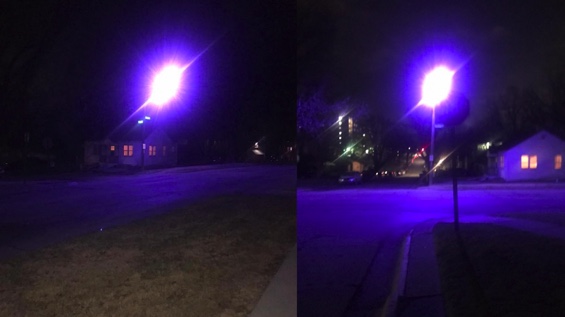How government hiring shows up in ways that weren't planned.
It was the first time I had seen it. It was in Wichita, Kansas. My coworker was taking me and a few students home from an event with a guest speaker when I saw something odd: a purple street light.
I first thought this was just a weird accident, but as we drove through the city, I saw dozens of purple street lights.
In the car, we started coming up with ideas. Maybe one of the high schools in the area was purple. Maybe there was a month for bringing attention to a disease that we didn't know about. Did it have anything to do with the environment?
We got rid of most of those ideas because none of them seemed safe enough to explain why the lights were on. There's a chance that the purple lights were just as bright as regular lights, but that's not the problem. Drivers aren't used to being in a place that is only purple, so it was hard for the driver to get used to it. It seemed worse than having no street lights at all in some ways.
I found news from other places when I looked for it. There are a lot of stories about the mystery of the purple lights on local news sites. In the end, there are two best ways to explain the appearance and spread of the new purple lights: one is technological and the other is political.

One Street Light Company to Rule Them All
After some digging, I was able to find the first answer. Adam Rogers writes for Business Insider about how the Solid State Lighting (SSL) business is dominated by one company, Acuity. SSL systems are systems that use LED light in a way that is often thought to be good for things like street signs. Rogers says, "Every city with purple lights that answered my questions or has public records about the matter bought its LED lights from Acuity."So what was going on? Well, Rogers talked to someone from the City of Vancouver, and they said that the problem is caused by a problem with LED lights. "The fixture's white color comes from a coating called a laminate. As that plastic started to wear down, the color started to turn purple.
In a way, this is our response. A company seems to have made a mistake in making a new technology, which is causing roads to turn purple.
But this theory doesn't answer a very important question: why does one company have such a big impact on how the US (and Canada) lights up?
Research by Rogers shows that in 2017, when the bad bulbs started to be made, Acuity had the biggest share of the lighting market.
Based on the data, it's not clear how much Acuity controls entry to municipal markets, but the fact that this defect is so common suggests that it has a fair amount of power as a contractor for local and state governments.
Why does this happen? Well, in the government lighting market, the winner takes all. Most street lights aren't bought one at a time. Instead, governments at different levels accept bids from companies that want to make a lot of the same thing.
So, let's say a city wants to replace its old street lights with new LED ones. It's not like agents go to the store where cheap street lights are sold. They ask companies to bid on the job of making the street lights, and the company that bids the most gets the whole project.
When things are like this, a small number of winners start to take over the market, and smaller companies can't fight for the bigger jobs.
Compare this to the way you choose light bulbs. Choose one brand of light bulbs for the whole house? Not many people do. Instead, I and a lot of other people buy light bulbs one pack at a time, depending on who has the best price.
This doesn't mean that one company will take over the lighting market. That's not how competition works. But government contracts do make markets more likely to be dominated by a few companies than they would be if there weren't any contracts.
If people or neighborhoods didn't have to sign contracts, they might work with private companies to get the lights they're willing to pay for. It's hard to picture what this would look like exactly, but "less centralized" seems like a good guess.
This problem is made worse by the fact that the government has now made it illegal to use electric light bulbs. Changes like this hurt competition even more by giving an edge to companies that are better able to adapt to arbitrary standards for energy economy.
So, if you're driving at night and a strange purple light is blocking your view, remember that the light was made wrong, but the way it will affect you is predictable if you think about the incentives at play in government hiring.



















